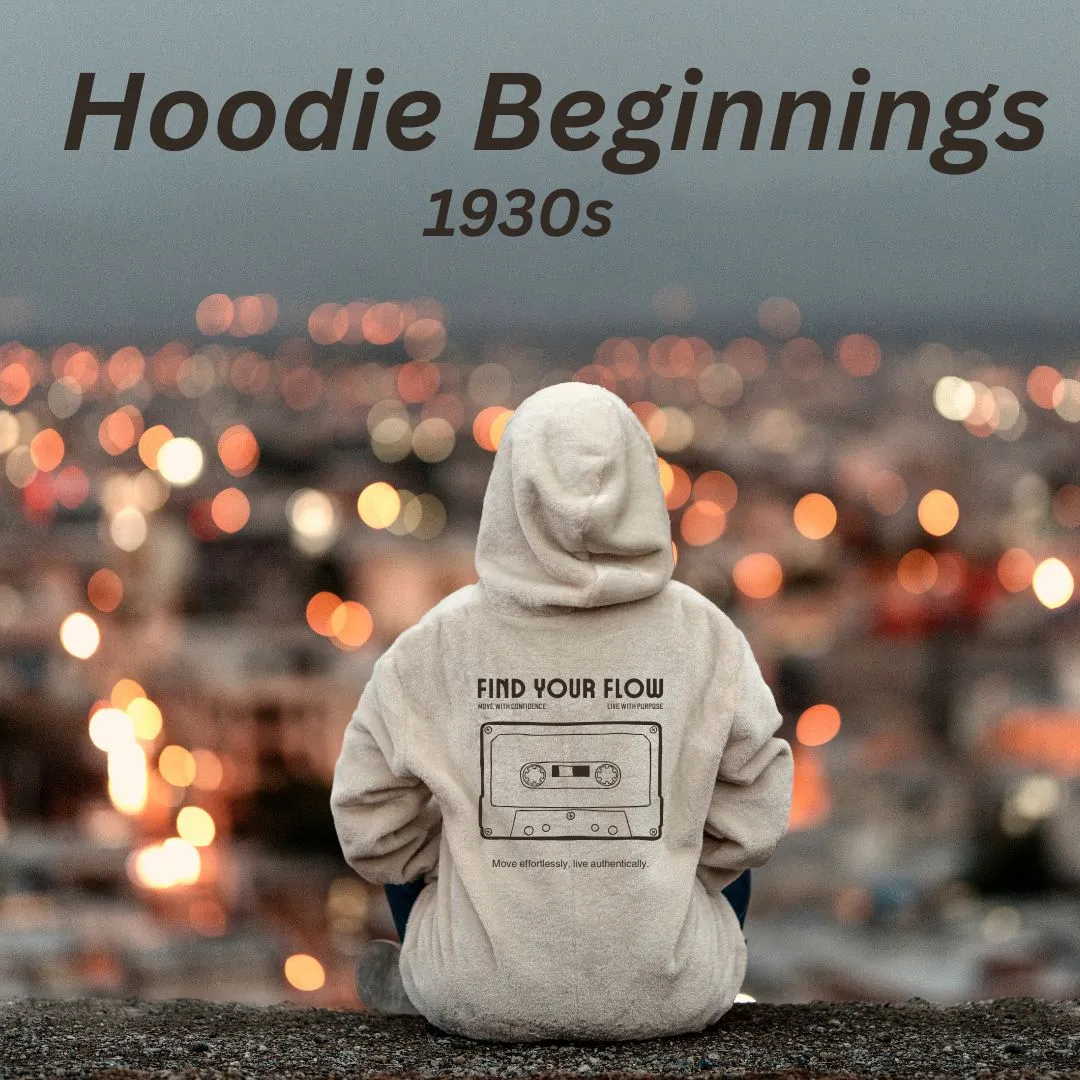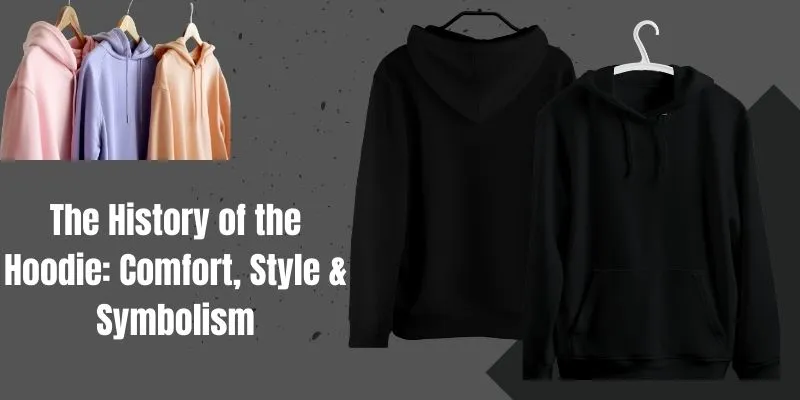The hoodie is more than just a piece of clothing—it is a cultural symbol with a powerful and fascinating history. From its early beginnings as a workwear hoodie in the 1930s to its current place in luxury fashion houses, the hoodie has transformed in ways that few garments ever have. Many people see it as casual attire, but its story is full of rebellion, comfort, creativity, and identity. The history of the hoodie shows how one simple garment can reflect society’s changes, movements, and moods over nearly a century.
If you look at the hoodie evolution, you can see how each decade left its mark. It started as a purely practical invention for workers, then became an athletic staple for college teams, before transforming into streetwear and hip-hop fashion. Later, it entered the world of luxury fashion designers and high-end collaborations. Today, hoodies are worn by workers, athletes, activists, celebrities, and students worldwide. This universal appeal makes the hoodie one of the most iconic and adaptable garments in modern fashion history.
Origins and Early Development (1930s: Invention)

The story begins in the Great Depression era of the 1930s, when Champion Products invented the very first hooded sweatshirt. It was designed to help warehouse workers and athletes stay warm in freezing conditions. The workwear hoodie combined a protective hood with a front pocket, making it both practical and functional. Unlike fashion-forward garments, its original purpose was purely utilitarian. This invention marked the foundation of the hoodie fashion history we recognize today.
At first, the hoodie was not about style or trends—it was about solving a problem. Outdoor laborers, construction workers, and athletes who trained in harsh conditions trusted the hoodie’s durability. Its cotton fleece fabric provided insulation, while the hood shielded against wind and rain. In this way, the hoodie became a trusted companion for workers, setting itself apart from other clothing of the time. This practical beginning planted the seeds for what would later become a cultural and fashion phenomenon.
Hoodie Evolution in Sports: Athletic Adoption (1960s–1970s)

By the 1960s, the hoodie had moved from warehouses to college sports fields. Universities began producing hooded sweatshirts with their team logos, giving the garment new popularity. Athletes used hoodies during warm-ups and training sessions, linking them with strength, resilience, and discipline. This period marked the beginning of athletic hoodie adoption, making it a staple in college and professional sports.
The shift was significant because the hoodie became a symbol of pride and belonging. Young people started wearing their university hoodies outside of sports events, signaling community, loyalty, and identity. The hoodie was no longer only functional—it was also expressive. This growing popularity meant that the hoodie evolution was no longer limited to workwear or sports but was stepping into everyday culture.
Cultural Revolution: Rebellion & Street Style (1970s–1980s)
In the 1970s and 1980s, the hoodie became deeply tied to youth rebellion and street culture. In New York City, the rise of hip-hop culture brought the hoodie into urban life. Graffiti artists, breakdancers, and rap pioneers adopted the hoodie as a streetwear essential. Its oversized fit, comfort, and ability to provide anonymity made it the perfect choice for city streets.
The hoodie in hip-hop culture quickly became more than just clothing—it became a statement of resistance. Mainstream society often viewed hoodies with suspicion, associating them with gangs or troublemakers. Yet for urban youth, the hoodie symbolized creativity, struggle, and unity. This was when the hoodie truly became street style, carrying cultural weight beyond fashion. The cultural significance of hoodie was now tied to self-expression and defiance.
Hoodie in Mainstream Fashion (1990s: High-End Integration)
By the 1990s, the hoodie had entered mainstream fashion and luxury markets. Major designers began featuring hoodies in their runway collections, blending streetwear aesthetics with high-end fabrics. The hoodie was no longer just for athletes or rappers—it was now a status symbol. This was a turning point in the hoodie fashion history, as it moved from counterculture to global acceptance.
Designer collaborations fueled this transformation. Streetwear brands like Supreme and luxury houses like Louis Vuitton experimented with hoodie design evolution, using materials such as cashmere, silk, and leather. Limited edition hoodies became must-have items, often resold for thousands of dollars. This era proved that the hoodie could be both casual and luxurious, breaking barriers in the fashion industry.
The Modern Cultural Significance of Hoodies (2000s–Today)
In the 2000s, hoodies took on new cultural meanings that extended beyond fashion. In the tech sector, hoodies became the unofficial uniform of startup founders, symbolizing a shift from corporate suits to casual attire. At the same time, hoodies became symbols of activism and social justice. Protests around the world used the hoodie as a visual representation of resistance and solidarity.
Today, the hoodie represents comfort, identity, and social meaning. For some, it is a symbol of youth freedom. For others, it carries the weight of protest movements. At the same time, it remains a go-to piece in fashion collections, blending utility with modern design. The hoodie continues to hold a unique position in culture, balancing practical wear with powerful symbolism.
Contemporary Hoodie Design Evolution
The hoodie design evolution has accelerated with modern technology. Today’s hoodies are made with eco-friendly fabrics, including organic cotton, bamboo blends, and recycled polyester, reflecting the demand for sustainable hoodie design. Fashion brands are experimenting with sweat-resistant, stretchable, and breathable fabrics that enhance comfort.
At the same time, designer collaborations and limited edition hoodies are at the heart of modern hoodie culture. Streetwear labels partner with luxury brands to create premium hoodie materials and unique designs. These pieces often sell out instantly, creating hype and exclusivity. The hoodie has managed to remain timeless yet innovative, adapting to consumer needs while maintaining its cultural roots.
Types of Hoodies
Not all hoodies are the same. Two main types dominate the market today:
- Zip Hoodie: Easy to layer, practical, versatile, and popular in casual and sporty styles.

- Pullover Hoodie: Classic, cozy, simple, and favored for warmth and comfort.
Both styles remain equally popular worldwide. The choice depends on personal preference, season, and fashion needs. Thanks to hoodie evolution, both have become timeless essentials.
Style & Fashion Tips: How to Wear Hoodies
You can wear hoodies in stylish ways without looking sloppy. For a modern streetwear look:
- Pair a hoodie with fitted jeans and sneakers.
- Layer under a leather jacket or oversized coat.
- Choose neutral shades like black, gray, or navy for versatility.
- Go bold with red, yellow, or green if you want a standout look.
- Add accessories like caps, beanies, or watches to complete the outfit.
Treat your hoodie as a fashion piece, not just casual clothing. Today, hoodies work in almost any setting—from streetwear outfits to business-casual tech culture. This is why hoodie in fashion continues to stay relevant across all seasons.
The Hoodie as Identity and Expression
One of the strongest elements of hoodie fashion history is its role in identity and self-expression. Unlike formalwear, the hoodie allows people to project individuality. Fans, subcultures, and even protest movements use hoodies to communicate messages without words.
For example:
- Hip-hop artists used hoodies to represent rebellion.
- Tech workers used hoodies to signal creativity and anti-establishment values.
- Activists wore hoodies to symbolize solidarity.
- Fashion enthusiasts embraced luxury hoodies for exclusivity.
The hoodie is not just a garment—it is a language of personal and cultural identity.
Global Popularity of Hoodies
Nowadays, hoodies are a mainstay of fashion worldwide. Oversized hoodies are associated with streetwear and K-pop fashion in Asia. They are worn under jackets and trench coats throughout Europe to create a stylish urban look. Hoodies continue to be a symbol of activism and informal comfort in the US.
This worldwide adoption proves the universal appeal of hoodies. No matter the culture, climate, or community, hoodies adapt seamlessly. They remain both functional and symbolic, bridging the gap between workwear and high fashion.
Conclusion
The history of the hoodie proves that it is far more than a casual garment. From its origins as a workwear hoodie in the 1930s to its rise as a streetwear hoodie and fashion icon, the hoodie reflects society’s shifts in culture, style, and identity. It has been embraced by athletes, artists, activists, and designers, each adding new meaning to its story. Today, the hoodie represents comfort, rebellion, and self-expression, while also standing at the center of sustainable design and modern fashion innovation.
As we look ahead, the hoodie evolution shows no signs of slowing down. Whether worn on the streets, in sports arenas, at protests, or on luxury runways, the hoodie remains a universal symbol of individuality and cultural significance. Its journey from workwear to streetwear is not just about fashion—it is about identity, resilience, and belonging. Truly, the hoodie is one of the most iconic and enduring garments in modern fashion history.
FAQs
Q1: Who invented the hoodie and when?
The hooded sweatshirt was created in the 1930s by Champion Products. It was originally a workwear hoodie for warehouse workers. This marked the beginning of hoodie evolution. Over time, it transformed into a cultural and fashion icon.
Q2: Why did hoodies become popular in hip-hop culture?
In the 1970s–80s, hoodies became central to hip-hop fashion. Graffiti artists and breakdancers wore them for comfort and anonymity. Hoodies became symbols of rebellion and identity in urban communities. This shaped the cultural significance of hoodie in youth movements.
Q3: When did hoodies enter high fashion?
The 1990s brought hoodies into luxury fashion. Designers experimented with hoodie design evolution, using premium hoodie materials. Designer collaborations created limited edition hoodies. This was a turning point in hoodie fashion history.
Q4: What makes hoodies a modern cultural symbol?
Hoodies represent identity, comfort, and protest. In the tech sector, they are casual uniforms. In activism, they carry social justice symbolism. This combination gives hoodies powerful cultural meaning.
Q5: Are hoodies suitable for all seasons?
Yes. Lightweight cotton blends are good for summer, while fleece hoodies work best for winter. Modern fabrics add breathability and sweat-resistance, making hoodies year-round essentials.
Q6: What are the most popular hoodie styles today?
- Pullover hoodies (classic choice).
- Zip hoodies (versatile and practical).
- Limited edition hoodies (for collectors).
- Sustainable hoodies (eco-friendly designs).
All these options show how hoodie evolution continues.


Leave a Reply